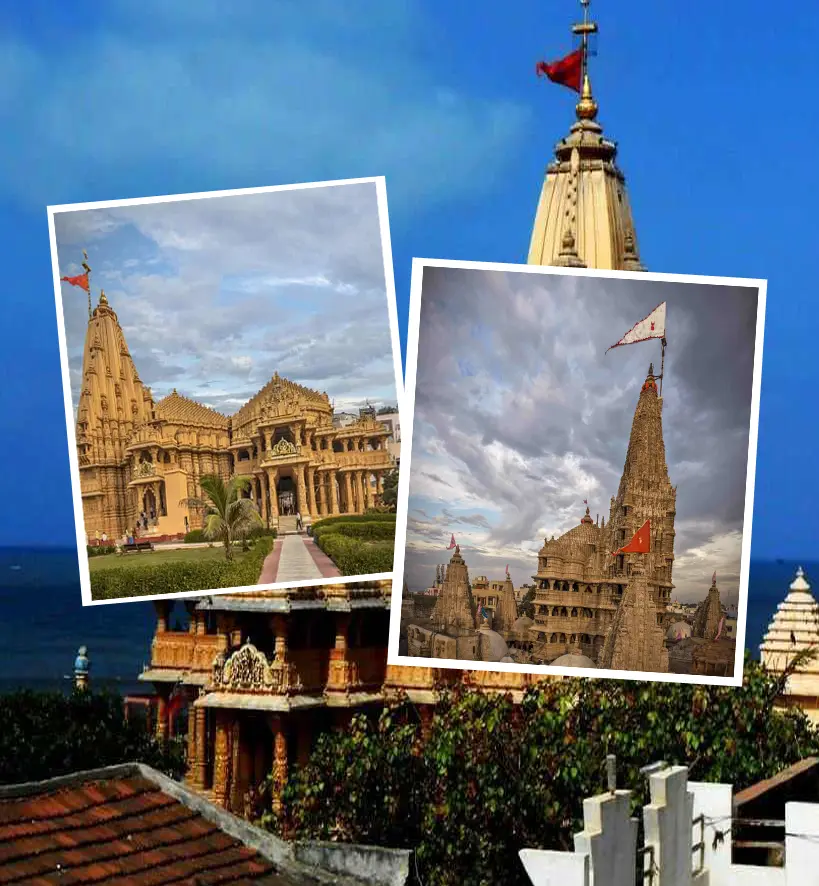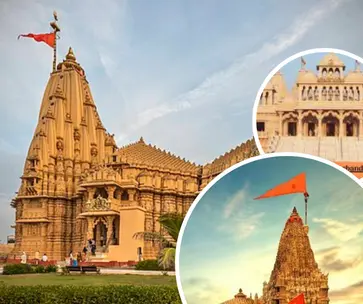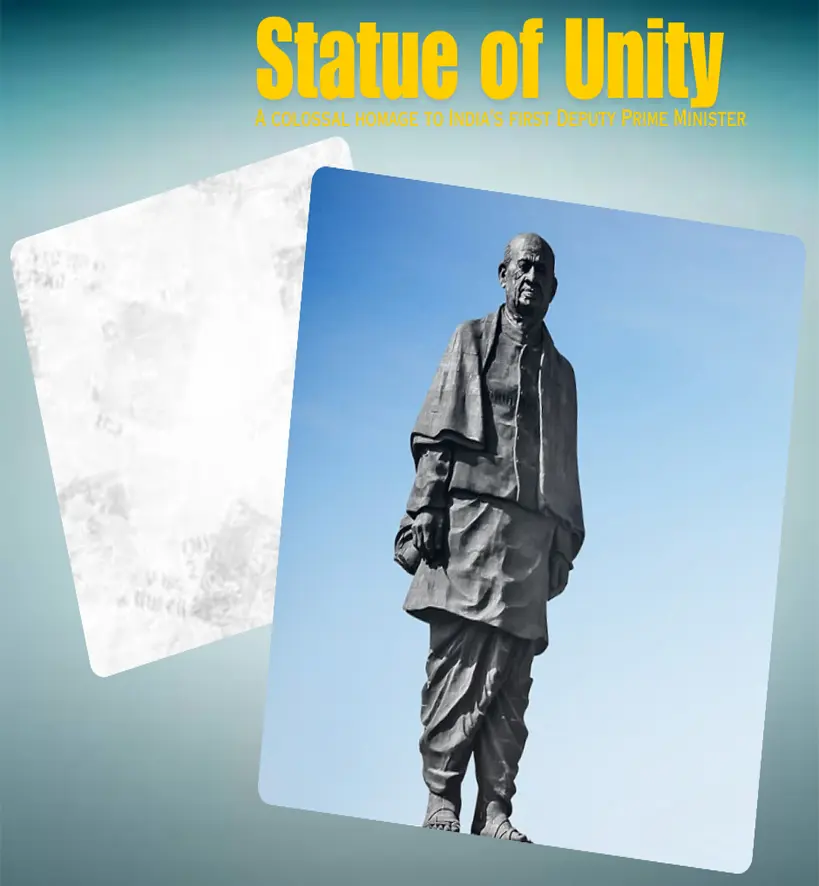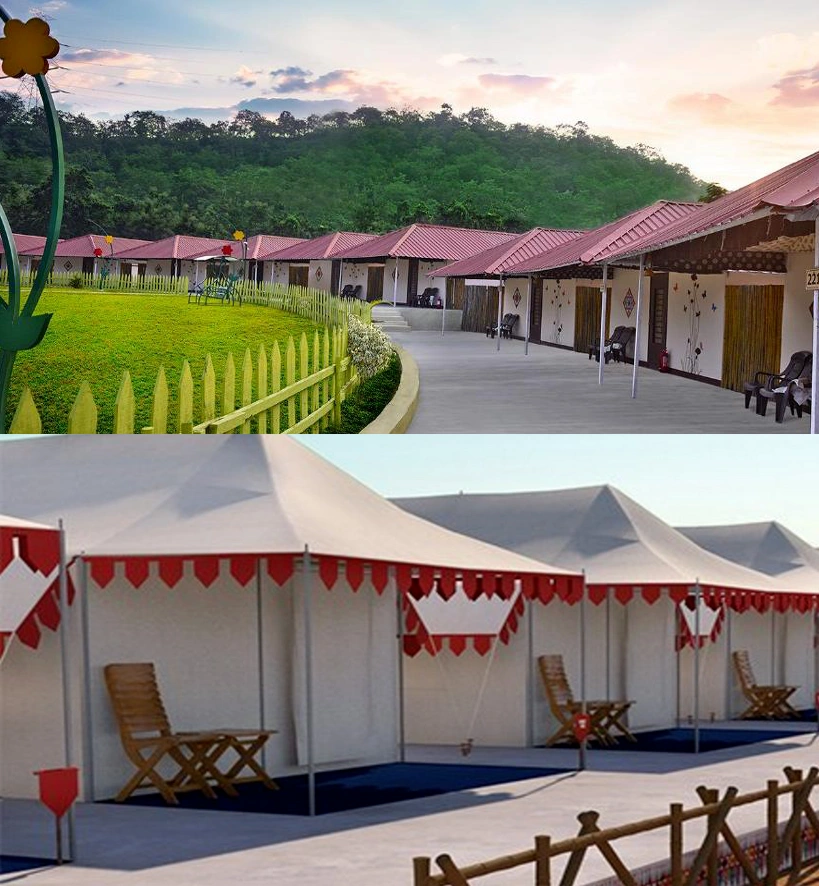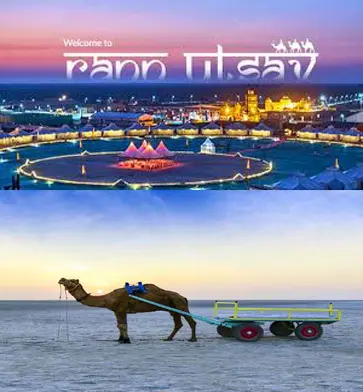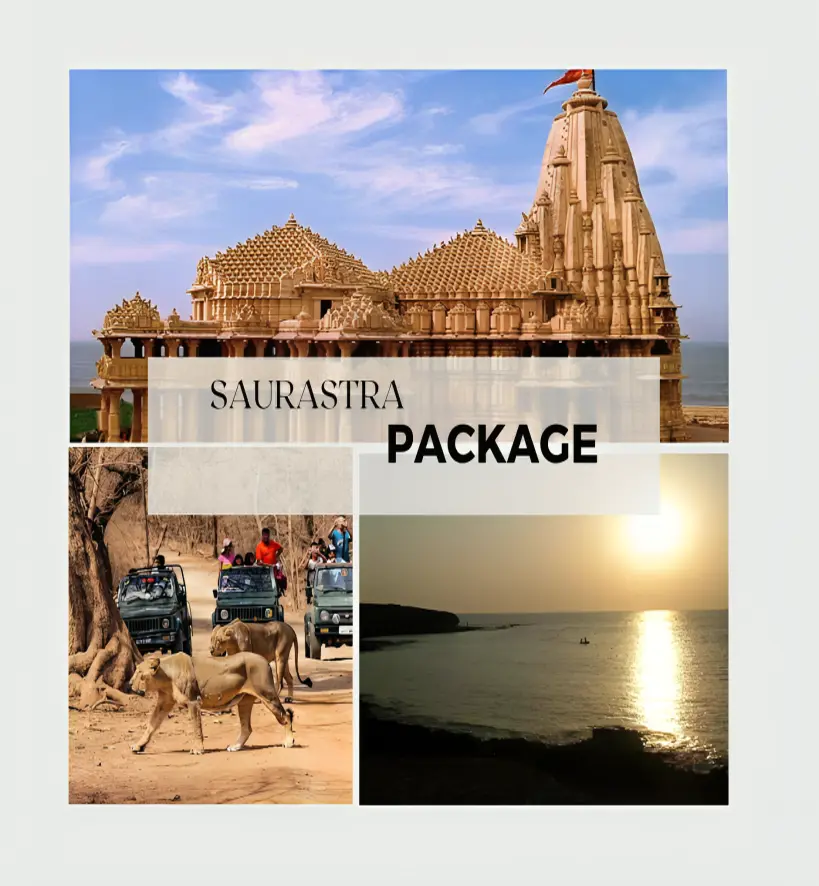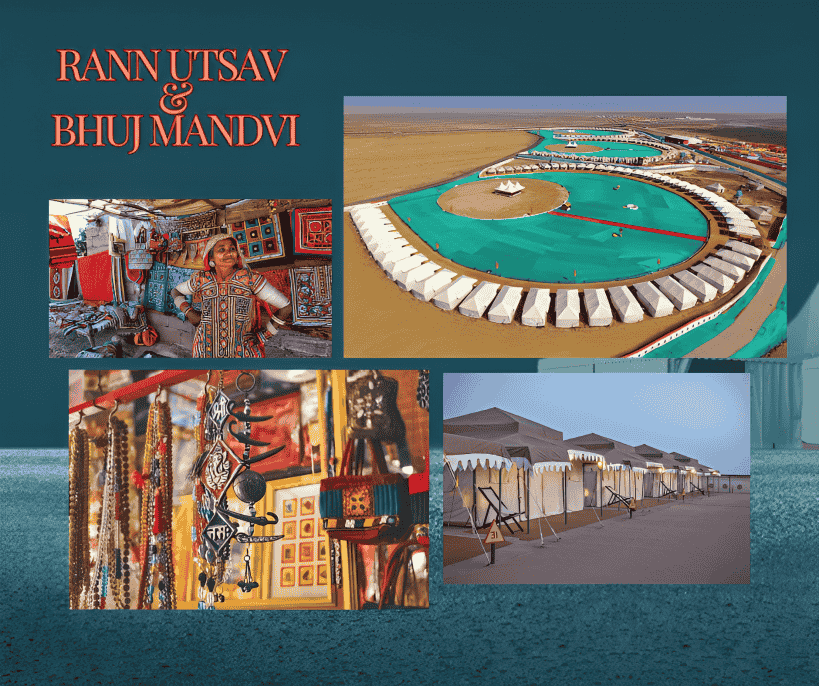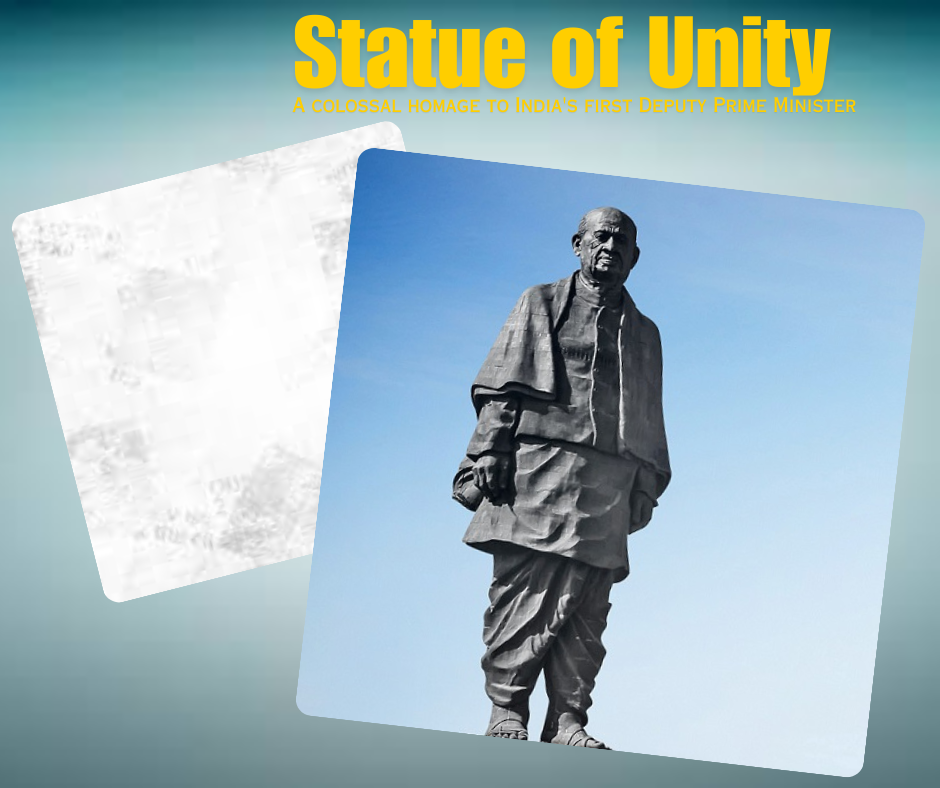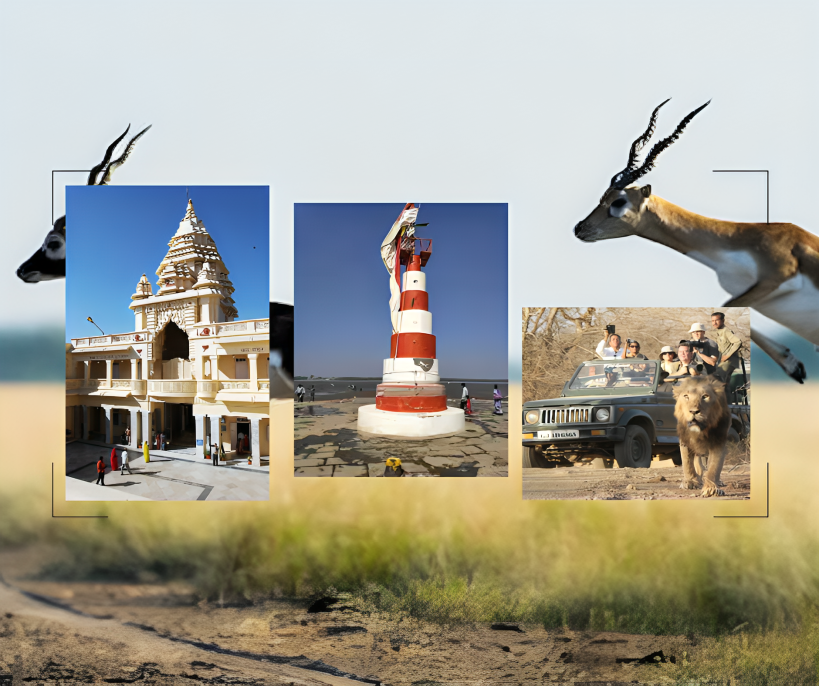The original Dwarkadhish Temple is believed to have been established more than 2,500 years ago. It is said that the first temple was constructed by Vajranabh, the great-grandson of Lord Krishna. The temple has undergone numerous renovations and reconstructions over time, with the current structure dating back to about 500 years ago.
Dwarka Temple History
Dwarka Temple was established more than 2500 years ago by Lord Krishna's super grandson, Vajranabh. The ancient Temple has been renovated numerous times, specifically leaving imprints of the 16th and 19th centuries. The Temple stands on a small hill accessed by 50 more steps, with heavily sculptured walls that cocoon the sanctum with the primary Krishna idol. Around the complex lie other smaller shrines. The walls have carved legendary characters and legends. The dazzling 43 m high spire is topped with a flag crafted from 52 yards of fabric that flutters in a smooth breeze. The temple also helps you witness a great view of the Arabian Sea and you will be motivated to explore Dwarka Temple history.
Significance of Dwarka TempleThe Temple of Dwarka is an honored pilgrimage destination for all Hindu pilgrims as it is one among the Chardham or monasteries of Hinduism set up by Adi Shankaracharya. Dwarka is also one of the 'Sapta Puris' or seven holy pilgrimage locations of Hinduism. A Darshan of Dwarkadheesh at the Temple is stated to steer one onto the trails of Moksha. Also, the mythological importance of the Temple is quite high. It is determined that the Temple stands over the place in which Lord Krishna resided for many centuries again in time.
History of Dwarka TempleDwarka Temple History reflects ample light on Lord Krishna’s creations. King Vasudev the 2nd was defeated by Mahakshatriya Rudradama for the duration of 200 AD. After the loss of life of Rudradama his spouse, Queen Dheeradevi, requested his brother Pulumavi to assist her rule the state. Rudradama believed in the Vaishnava faith and worshipped Krishna in Dwarka. Vajranabha, who's also believed to be his successor, built a 'chhatri' and deified an idol of Krishna in it. In 885 AD, the Temple was renovated by Shree Nrushinhaashrma, head of the "Shreemad Jagatguru Shankaracharya pith.
In 1241, Mohammad Shah invaded Dwarka and broken the Temple throughout this conflict; 5 Brahmins (Virajee Thakar, Nathu Thakar, Karasan Thakar, Valjee Thakar, and Devasee Thakar) fought against him, died, and have been honored as martyears. A shrine became constructed near the Temple in their honor and at gift is called "Panch Peer".
Best Time to Visit Dwarkadhish TempleThe temple door remains open from 6 AM to 1 PM, and again from 5 PM to 9:30 PM. Devotees usually spend 1-2 hours exploring the Dwarka temple. The best time to visit this Temple is from September to March and the pleasant weather helps you explore the temple peacefully. We are here to arrange the customized trips and you will enjoy exploring the temple. Tailored Gujarat trips give you confidence to begin your joy.
Frequently Asked Questions
-
When was the Dwarkadhish Temple built?
-
Who built the Dwarkadhish Temple?
The original construction of the temple is attributed to Vajranabh, the grandson of Lord Krishna. However, several dynasties, including the Mauryas and Solankis, contributed to its renovation and expansion. The current structure was mostly rebuilt by the Solanki rulers of Gujarat around the 15th century.
-
What is the mythological significance of the Dwarka Temple?
According to Hindu mythology, Lord Krishna established the city of Dwarka as his kingdom. The Dwarkadhish Temple marks the place where Krishna resided during his reign. It is believed that Krishna’s palace in Dwarka was a grand and magnificent structure, but after his departure from the mortal world, the city of Dwarka submerged into the sea. The temple, however, continued to stand as a testament to his divine presence.
-
What is the connection of Dwarka Temple with the Mahabharata?
Dwarka plays a significant role in the Mahabharata, as it was the kingdom of Lord Krishna during the epic. Krishna played a pivotal role in the Mahabharata War, acting as the charioteer for the Pandava prince Arjuna. After the war, Lord Krishna returned to Dwarka, where he spent his final years. According to the Mahabharata, the city of Dwarka was submerged into the sea after Krishna's departure.
-
Is Dwarka one of the Char Dham pilgrimage sites?
Yes, the Dwarkadhish Temple is one of the four sacred pilgrimage sites known as the Char Dham of Hinduism. The Char Dham circuit includes Dwarka, Badrinath, Puri, and Rameswaram. Pilgrims often visit these temples to attain spiritual merit and salvation.


